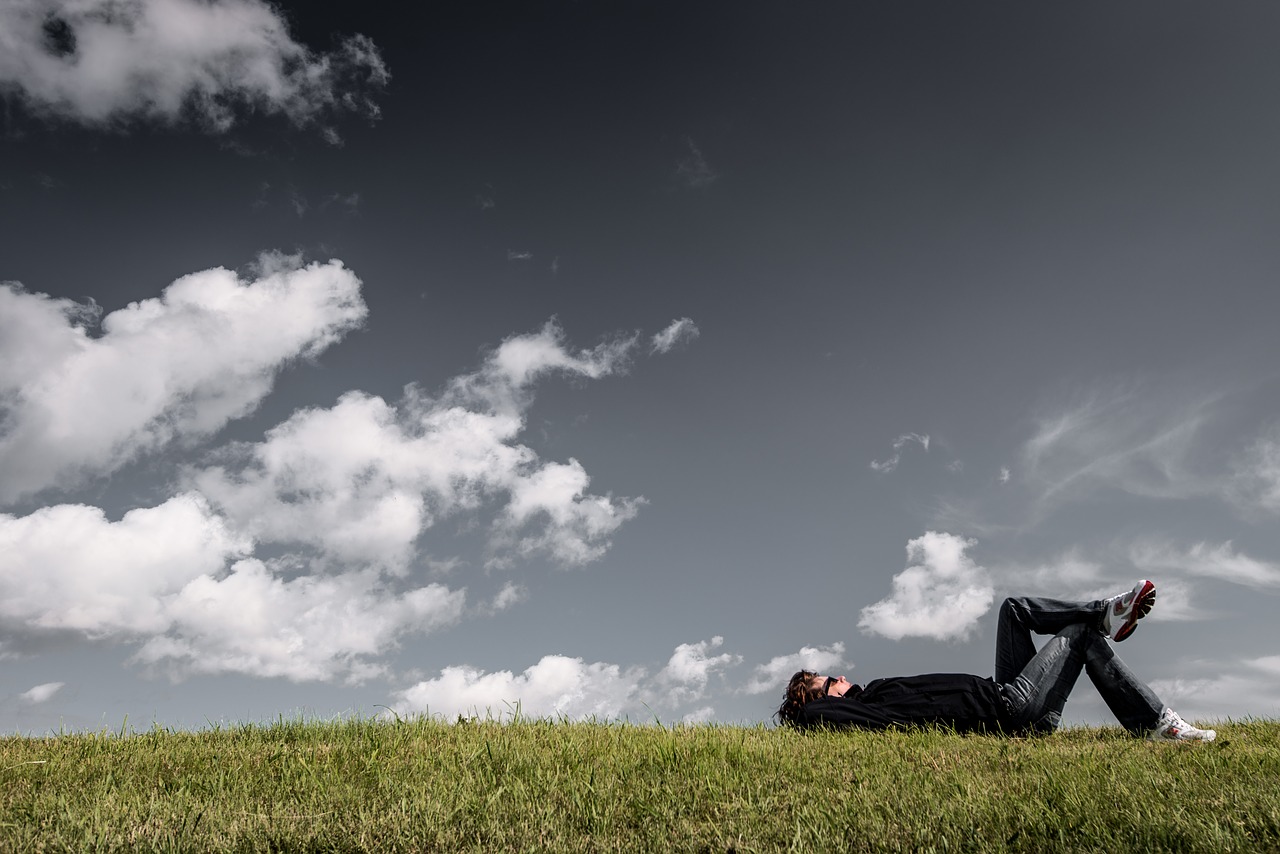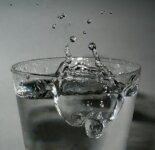Vitamin D is a vital nutrient in your body, and one of the main sources of vitamin D for humans is exposure to UVB radiation from the sun. However, UV also causes skin cancer and skin aging, so sun protection (sunscreen, protective hats, protective clothing) is important. How should we balance the two? This is a very controversial topic and there aren’t a lot of clear guidelines, so here’s my best attempt at deciphering the prevailing wisdom.

What is Vitamin D?
Vitamin D is an important vitamin that has many possible roles in your body. It’s best known for maintaining your calcium levels and preventing osteoporosis and soft bones, but it’s also suspected to have a role in a whole bunch of other processes including cancer prevention, heart disease, metabolic syndrome and obesity.
Vitamin D is naturally produced in your skin upon exposure to UVB radiation. UVB radiation of wavelengths 270-300 nm will produce vitamin D in your skin, with maximal vitamin D synthesis at 295-297 nm. The amount of vitamin D produced varies with factors like where you live (latitude), time of year, time of day and your skin colour. Daily exercise also helps the body produce vitamin D.
There are a few foods which are sources of vitamin D, including mushrooms, fatty fish, liver, cheese, and specially fortified foods, but this doesn’t contribute to more than 10% of an average adult’s vitamin D requirements. Vitamin D supplements are also available.
It’s estimated that 23% of Australian adults are vitamin D deficient, while 32% of US adults are deficient.
Does sunscreen affect vitamin D?
Since sunscreen reduces the amount of UVB reaching your skin, it seems logical that sunscreen would decrease vitamin D production, but a 2009 study found that it has little effect. The reason seems to be that most people don’t apply sunscreen sufficiently, and even if you think you do, the spots that you miss (scalp, between fingers etc.) get enough UV for adequate vitamin D levels.
There are some sunscreens being developed that absorb harmful UV wavelengths while allowing vitamin D-producing UVB to pass through. The only one on the market that I know of is SolarD, but I expect this concept will become increasingly popular.
How should I get the right amount of sun?
The easiest way to take into account all of the different factors for vitamin D production is to compare the UV required to the minimum amount of UV that would cause sunburn (the minimal erythemal dose, or MED). Research indicates that exposing 25% of the body to half the MED 2-3 times a week is enough for adequate vitamin D production. Additionally, your body can rely on vitamin D stored in your tissues for 1-2 months, so year-round exposure may not be necessary.
For the US, there are no broad guidelines yet for safe sun exposure. Some researchers recommend 15 minutes in the sun with face, arms and legs exposed 2-3 times a week between 11 am – 3 pm between May and October for people with Fitzpatrick II skin (shorter time if more skin is exposed, longer for darker skin).
For Australians, a set of guidelines have been issued by the Australian and New Zealand Bone and Mineral Society, the Australasian College of Dermatologists, Cancer Council Australia, Endocrine Society of Australia and Osteoporosis Australia in January 2016:
- When the UV index is 3 or above in the middle of the day (most of the year), sun protection is recommended when outdoors for more than a few minutes. Most Australian adults will still produce sufficient vitamin D from incidental exposure during typical outdoor activities, despite taking sun protection measures.
- In late autumn and winter when the UV index is below 3, sun protection is not recommended, and people should go outdoors in the middle of the day with some skin uncovered on most days of the week.
For people in the UK, due to the high cloud cover and low UVB, the NHS recommends that almost everyone should consider taking a daily vitamin D supplement in winter.
Things to keep in mind
Sun exposure isn’t just UVB exposure. The sun also produces damaging UVA, which has no known health benefits, as well as IR and visible light. UVB is highest around noon while UVA levels stay relatively consistent throughout the day, so in terms of cost/benefit, this is the best time to get maximum vitamin D production while limiting exposure to the other harmful radiation types.
Only short, non-burning exposures are required for vitamin D production. Longer sun exposure increases your risk of melanoma and other skin cancers, particularly if you end up sunburnt.
UVB doesn’t pass through glass, so sunlight through a closed window won’t help your vitamin D levels but will increase UVA damage.
Tanning beds produce far more UVA (which causes tanning) than UVB, so they are much riskier than regular sunlight.
You should still wear sunscreen, particularly if you’re using anti-aging ingredients in your skincare regimen, as many of these increase your risk of sun damage.
If you can’t follow the guidelines, you should talk to your doctor about monitoring your vitamin D levels and what steps to take to safely increase your vitamin D (most likely through taking supplements – I take these ones from NOW, but I get them off iHerb). This includes if you’ve had skin cancer or are at high risk of skin cancer, if you wear concealing clothing, if you have very dark skin, or if you’re housebound.
Verdict
- Short periods of sun exposure in the middle of the day will provide you with adequate vitamin D while minimising your risk of skin cancer and photoaging.
- Continue avoiding sunburn and UVA.
- Sunscreen is unlikely to make you significantly more vitamin D deficient than you already are.
References
DG Hoel, M Berwick, FR de Gruijl & MF Holick, The risks and benefits of sun exposure (open access), Dermato-Endocrinology 2016, 8, e1248325.
Position statement – Risks and benefits of sun exposure and vitamin D, Cancer Council Australia 2016 (accessed 17 December 2016).
D Kockott, B Herzog, J Reichrath, K Keane & MF Holick, New approach to develop optimized sunscreens that enable cutaneous vitamin D formation with minimal erythema risk (open access), PLoS One 2016, 11, e0145509.
This post contains affiliate links – if you decide to click through and support Lab Muffin financially (at no extra cost to you), thank you! For more information, see Disclosure Policy.





This was an interesting read! So going for a walk to get lunch at work should be enough to keep me topped up. I’ve been worried that by protecting my skin I’ve been risking my health.
I’ve been worried too! My doctor originally recommended a vitamin D supplement due to my low winter vitamin D, but I was really overwhelmed by the options at the pharmacy. I think I’ll try judicious use of sunshine first!
Woo! Awesome post. I remember I spent so long avoiding the sun because I hated the way I looked in daylight, but one day my body just felt like I “needed” it (probably vitamin D deficiency). So I went outside to feel the warmth of the sun on my face for the first time in several months. It was blissful. Still one of my favorite feelings in the world. 🙂
I really like sunshine too, especially in winter – I don’t think the benefits are just limited to vitamin D! Too bad about the whole skin cancer thing, especially here in Australia under the ozone hole…
Doctors and specialists have agreed that I shouldn’t go out in the sun without sunscreen at all. My skin is far too fair and dsds had 100 skin cancers removed so it’s not worth the risk but I still get uninformed people trying to tell me to not wear sunscreen. Mm yeah think I’ll take my doctors advice … 😛
People that have just light skin and not very fair like mine still have no idea how easily I can burn so anyone with tanned skin can’t comphrehend it. My skin doesn’t even like sunscreen so it would be nice not to have to use it.
great post, learned some new things. I had never heard of “SolarD” that blocks UV while allowing UVB thru. Even with all the press on sun protection it’s still amazing how many people don’t use sunscreen. I learned my lesson with 3 cases of skin cancer in my extended family within the last 2 years. Thankfully all fully recovered but I learned my lesson and always wear protective clothes, sunscreen, sunglasses, etc….
I’ve noted all the tips from “Things To Keep In Mind” section. Thanks for sharing the valuable information.
Hi Michelle, it looks like the statistic of Vitamin D deficient people is misleading for people of color. These articles have some really interesting information:
– https://www.npr.org/sections/health-shots/2013/11/20/246393329/how-a-vitamin-d-test-misdiagnosed-african-americans
– https://www.nejm.org/doi/full/10.1056/NEJMoa1306357
These kind of findings make me question whether this furor of Vitamin D deficiency is really relevant for people of color, since we store Vitamin D in different forms than white people and are therefore often incorrectly diagnosed as Vitamin D deficient…
That’s really interesting! Thank you for pointing it out and dropping the links 🙂
When working out you need proper protection from damage from the sun. You can use sun screens to help you.
Sunscreens do protect against UV radiation, but the SPF is nothing else as a transmission value, e.g. SPF 20 still means 5 % (1/20) transmission. As almost all consumers use less than the amount at which the claim is established they often end up with SPF 5 – 10 in reality no matter what product they bought, meaning 20 – 10 % of UV light still passes through the sunscreen film. That way several field studies could not establish any difference in Vit. D blood levels between users and non-users of sunscreens. I even believe consumers using sunscreens stay longer in the sun and that way end up with a same high skin exposure dosage (through the sunscreen film) as somebody not using sunscreen and staying shorter in the sun. In the end a lot of Vit. D has been made.
We are not Vit. D deficient because of sunscreens, but because we work too much indoors. As said already above: no Vit. D made behind windows! If you love to work a lot, take pills! or living more north take at least pills in the winter!
Can you point us to any trustworthy study that’s specifically for people who are already vitamin D deficient (not just in winter, but due to their genetic make-up)? Do we follow the same guidelines as the others or do things change for us? My vitamin D levels are very low (it runs in the family). I take the prescribed supplements but I am still kind of on the low.
The national health guidelines usually have information on this – usually the advice is to talk to your doctor, and they can assess the relative benefits and risks of sun exposure and supplements.